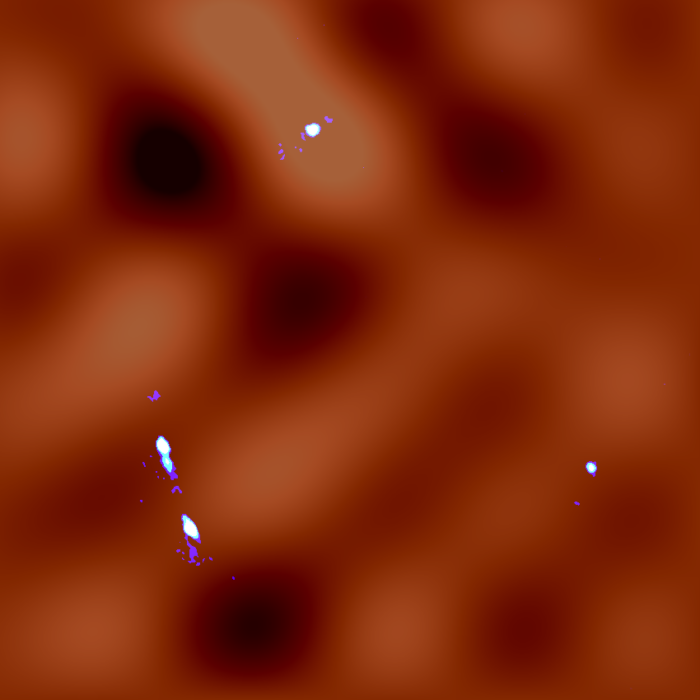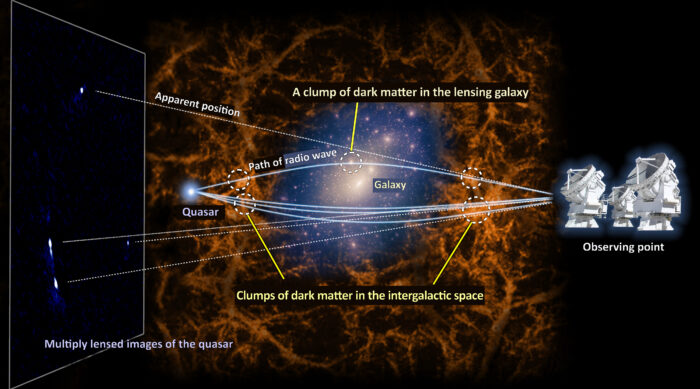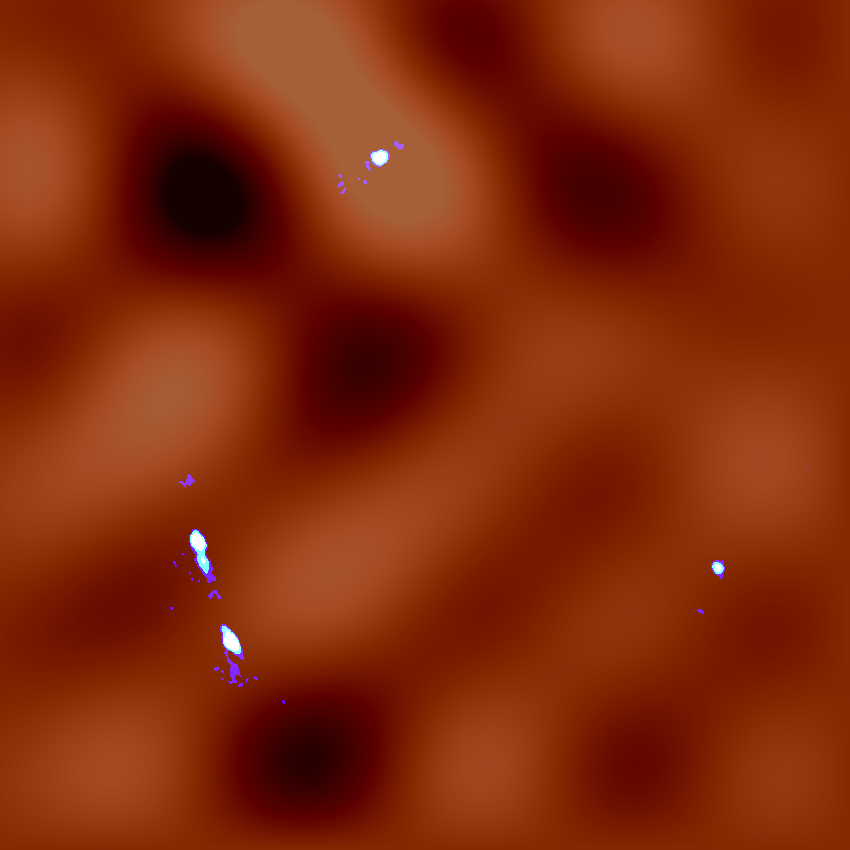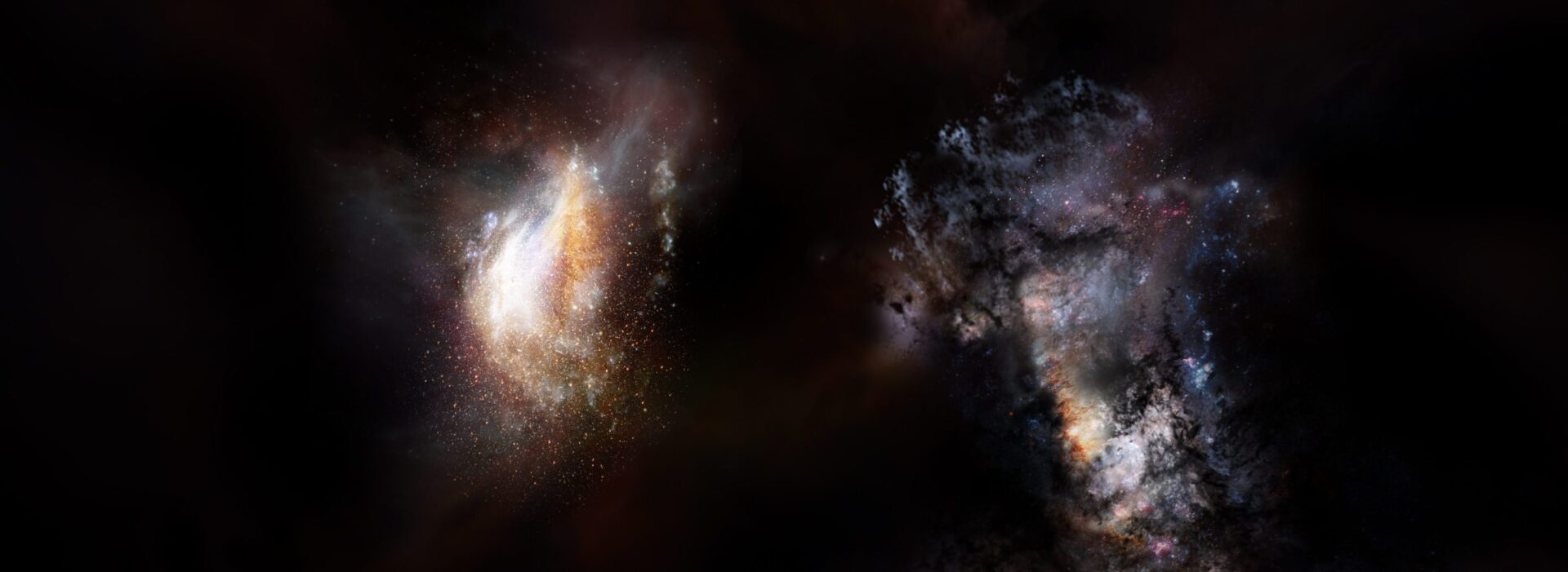ALMA Uncovers Fine-Scale Fluctuations in Universe's Dark Matter
A groundbreaking study using ALMA paves the way for a deeper understanding of dark matter's true nature.
A research team led by Professor Kaiki Taro Inoue at Kindai University in Osaka, Japan, has used the Atacama Large Millimeter/submillimeter Array (ALMA) in Chile to make an unprecedented discovery. The team has found fluctuations in dark matter distribution in the Universe on a scale smaller than that of massive galaxies.
This is the first time that the spatial fluctuations of dark matter in the far Universe have been detected on scales less than 30,000 light-years. This result shows that cold dark matter 1 is favored even on scales smaller than massive galaxies and is an essential step toward understanding the true nature of dark matter. The article was published in "The Astrophysical Journal" on September 7th.
Dark matter, the invisible material that makes up a significant fraction of the mass of the Universe, is thought to have played an important role in the formation of structures such as stars and galaxies 2. Since dark matter is not uniformly distributed in space but in clumps, its gravity can slightly change the path of light (including radio waves) from distant light sources. Observations of this effect (gravitational lensing) have shown that dark matter is associated with relatively massive galaxies and clusters of galaxies. However, how it is distributed at smaller scales is unknown.
Using the exceptional observational power of ALMA, the research team focused on a distant quasar 3, MG J0414+0534 4, situated 11 billion light-years away from Earth. This particular quasar displays a rare quadruple image thanks to the gravitational lensing effects of a galaxy in the foreground. However, the positions and shapes of these images did not match calculations based purely on the foreground galaxy's gravitational pull, indicating another influence at play.
Further investigation revealed the source of this discrepancy: the effects of dark matter on a scale smaller than that of large galaxies—specifically, less than 30,000 light-years. These findings confirmed and enriched the theoretical model of cold dark matter. According to the theory, these clumps of dark matter are distributed not just within galaxies (as represented by the pale yellow color in Figure 2) but also in intergalactic spaces (shown in orange in Figure 2).
The challenge lay in the fact that the gravitational lensing effects induced by these tiny clumps of dark matter are complicated to detect on their own. However, the high-resolution capabilities of ALMA, coupled with the lensing effect of the foreground galaxy, enabled this pioneering detection. Therefore, this research is a significant step toward verifying dark matter theories and further unraveling its enigmatic nature.
This work was supported by Grant-in-Aids for Scientific Research from the Japan Society for the Promotion of Science (Nos. 17H02868, 19K03937), the National Astronomical Observatory of Japan ALMA Joint Scientific Research Project 2018-07A, the same ALMA J A P A N Research Fund NAOJ-ALMA-256, and Taiwan MoST 103-2112-M-001-032-MY3, 106-2112-M-001-011, 107-2119-M-001-020, 107-2119-M-001-020.
Additional Information
The research team was composed by Kaiki Taro Inoue (Faculty of Science and Engineering, Kindai University, Higashi-Osaka, Japan), Takeo Minezaki (Institute of Astronomy, School of Science, University of Tokyo, Mitaka, Tokyo, Japan), Satoki Matsushita (Institute of Astronomy and Astrophysics, Academia Sinica, Taipei, Taiwan), and Kouichiro Nakanishi (National Astronomical Observatory of Japan, Mitaka, Tokyo, Japan / The Graduate University for Advanced Studies, SOKENDAI, Mitaka, Japan).
The original Press Release was published by the National Astronomical Observatory of Japan (NAOJ), an ALMA partner on behalf of East Asia.
The Atacama Large Millimeter/submillimeter Array (ALMA), an international astronomy facility, is a partnership of the European Organisation for Astronomical Research in the Southern Hemisphere (ESO), the U.S. National Science Foundation (NSF) and the National Institutes of Natural Sciences (NINS) of Japan in cooperation with the Republic of Chile. ALMA is funded by ESO on behalf of its Member States, by NSF in cooperation with the National Research Council of Canada (NRC) and the National Science and Technology Council (NSTC) in Taiwan and by NINS in cooperation with the Academia Sinica (AS) in Taiwan and the Korea Astronomy and Space Science Institute (KASI). ALMA construction and operations are led by ESO on behalf of its Member States; by the National Radio Astronomy Observatory (NRAO), managed by Associated Universities, Inc. (AUI), on behalf of North America; and by the National Astronomical Observatory of Japan (NAOJ) on behalf of East Asia. The Joint ALMA Observatory (JAO) provides the unified leadership and management of the construction, commissioning and operation of ALMA.
Images


Notes
- As the Universe expands, the density of matter decreases. Thus, particles of dark matter (matter that is invisible to light) will no longer encounter other particles and will have independent motion different from the movement of ordinary matter. In this case, dark matter particles that move at a speed far less than the speed of light with respect to ordinary matter are called cold dark matter. Because of the low velocity, it cannot erase the small-scale structures in the Universe. ↩︎
- In the early Universe, stars and galaxies are thought to have been formed by the gravitational growth of density fluctuations of dark matter and the aggregation of hydrogen and helium attracted to clumps of dark matter. The distribution of dark matter on scales smaller than that of massive galaxies is still unknown. ↩︎
- A quasar is the central compact region of a galaxy that emits extremely bright light. The compact region and the surroundings have a large amount of dust that emits radio waves. ↩︎
- MG J0414+0534 is located in the direction of the constellation Taurus as seen from the Earth. This object's redshift (the increase in the wavelength of light divided by the original wavelength) is z=2.639. The corresponding distance is assumed to be 11 billion light-years, considering the uncertainty in the cosmological parameters. ↩︎
Contacts
-
Nicolás Lira
Education and Public Outreach CoordinatorJoint ALMA Observatory, Santiago - ChilePhone: +56 2 2467 6519Cel: +56 9 9445 7726Email: [email protected] -
Naoko Inoue
EPO officer, ALMA ProjectNational Astronomical Observatory of Japan (NAOJ)Email: [email protected] -
Bárbara Ferreira
ESO Media Manager -
Jill Malusky
Public Information Officer

